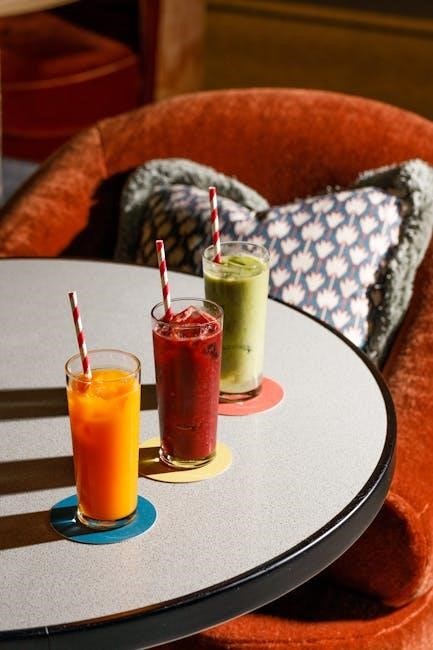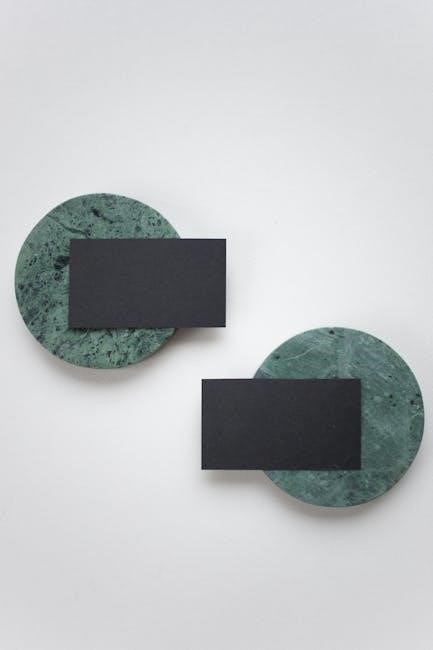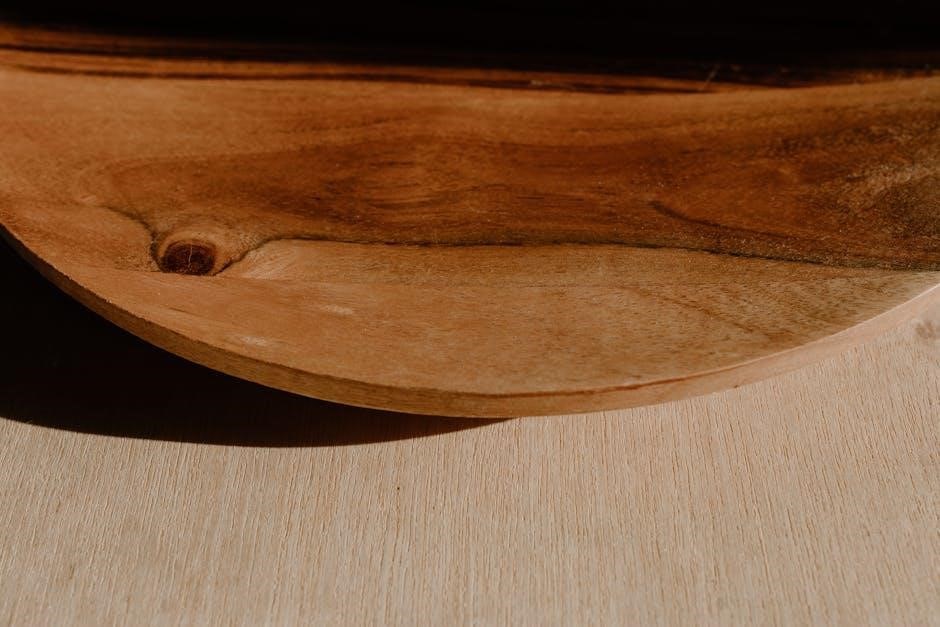knex coaster instructions
- Published
- in Instructions
Knex coasters offer a creative outlet for building intricate roller coasters using rods, connectors, and tracks. They inspire problem-solving skills and engineering concepts while providing endless fun. Perfect for all ages, Knex coasters spark imagination and bring joy through hands-on construction. Whether simple or complex, these structures are both challenging and rewarding to create.
1.1 What Are Knex Coasters?
Knex coasters are intricate, customizable roller coasters built using Knex rods, connectors, and tracks. They allow users to create realistic, motorized rides with loops, corkscrews, and multi-level designs. These sets include detailed instructions for assembly, enabling learners to construct functional coasters with smooth car movement. Knex coasters combine creativity with engineering principles, making them both educational and entertaining. They are perfect for hobbyists and students alike, fostering problem-solving skills and critical thinking through hands-on construction.
1;2 Brief History of Knex
Knex, a beloved toy brand, emerged in the mid-20th century, becoming iconic for its versatile building sets. Known for their rods and connectors, Knex sets allowed users to create flexible structures, from simple designs to complex roller coasters. Originally popular in the 1990s, Knex sets were widely recognized for their educational value, teaching physics and engineering concepts. Over the years, Knex evolved, introducing motorized components and intricate designs. Despite fluctuations in popularity, Knex remains a cherished tool for creativity and learning, with a dedicated community of enthusiasts continuing to innovate and share their creations.
1.3 Why Build a Knex Coaster?
Building a Knex coaster is an engaging and educational hobby that fosters creativity, problem-solving, and critical thinking. It allows users to bring their imagination to life by designing intricate roller coasters. The process teaches fundamental physics and engineering concepts, making it a valuable learning tool. Additionally, constructing a Knex coaster provides a sense of accomplishment and satisfaction as you watch your design take shape. It’s also a great way to relax and unwind while creating something unique and fun. Many enthusiasts enjoy sharing their designs online, inspiring others and building a sense of community.

Materials and Tools Needed
Building a Knex coaster requires various rods, connectors, tracks, motors, and gears. Additional tools include a screwdriver and clear work surface. Color-coded instructions guide assembly.
2.1 List of Knex Parts Required
A typical Knex coaster requires rods, connectors, tracks, motors, and gears. Specific parts include straight and curved rods, joint connectors, track segments, and a motorized chain lift. Some sets include over 640 pieces, with color-coded instructions to guide assembly. Additional components like supports and themed elements enhance customization. Ensure all parts are included for smooth construction. The variety of pieces allows for creativity while following detailed manuals. Having all components ready ensures a hassle-free building experience.
2.2 Additional Tools for Assembly
Beyond Knex pieces, essential tools include a screwdriver for motorized components and a rubber mallet for secure connections. Clamps can stabilize structures during assembly, while tweezers help with small parts. A measuring tape ensures accurate alignment, and a work light illuminates details. Organizational tools like a sorting tray keep pieces tidy. These tools enhance efficiency and precision, making the building process smoother and more enjoyable. Having them ready allows you to focus on creativity and problem-solving while constructing your coaster.
2.3 Organizing Your Workspace
A well-organized workspace is crucial for efficient Knex coaster assembly. Start by sorting Knex pieces into categories using trays or containers. Lay out all components on a large, flat surface to visualize your build. Keep instruction manuals within easy reach for quick reference; Maintain a clean area to avoid losing small parts. Use a magnetic strip for screws and motors to prevent misplacement. As you build, store unused pieces in labeled bags to ensure easy access. A tidy workspace reduces stress and helps you focus on creativity and problem-solving. Regularly clean up as you progress to maintain efficiency.

Step-by-Step Assembly Guide
Begin with the base structure, then add supports and track sections. Follow instructions to connect motors and gears, ensuring smooth car movement. Build step-by-step for stability.
3.1 Building the Base Structure
Start by constructing a sturdy base using Knex rods and connectors. This foundation ensures stability and supports the entire coaster. Use flat pieces to create a wide base, then stack vertical rods to form the initial height. Connect horizontal tracks to guide the cars smoothly. Follow the instructions to secure each part tightly, ensuring no wobbling. A stable base is crucial for the coaster’s performance and safety. Avoid overcomplicating this step—focus on creating a solid, even surface. Once the base is complete, you can begin adding supports and track sections. Always double-check connections for tightness before moving forward.
3.2 Constructing the Track System
Begin by connecting track pieces to the base, ensuring smooth transitions between sections. Use flexible rods to create curves and bends, allowing the track to twist and turn. Secure each piece tightly to maintain stability. Experiment with different shapes, such as loops or corkscrews, to add excitement. Always test the flow by rolling a car through the track to identify and fix any obstructions. A well-designed track system is key to a functional and thrilling Knex coaster. Creativity and precision are essential for crafting a memorable ride experience.
3.3 Adding Supports and Stabilizers
Add supports and stabilizers to ensure your Knex coaster remains sturdy and secure. Begin by placing vertical supports under tall sections to prevent wobbling. Use horizontal braces to reinforce long tracks and curves. Add L-shaped stabilizers at joints for extra rigidity. For multi-level structures, ensure each level has adequate support to distribute weight evenly. Test the structure by gently shaking it to identify weak spots. Strengthening these areas will ensure smooth car movement and prevent collapses. Proper support is crucial for both safety and performance, making your coaster durable and enjoyable for years to come.
3.4 Installing the Motorized Chain Lift
Attach the motor to the base of your coaster, ensuring it is securely fastened. Connect the motor to the gear system, which powers the chain lift. Feed the chain through the gears and align it with the track. Test the motor to ensure smooth operation and adjust the chain tension if necessary. The motorized chain lift is essential for propelling cars up inclines and maintaining consistent speed. Proper installation ensures reliable performance and enhances the overall functionality of your Knex coaster, making it more dynamic and engaging for users.
3.5 Attaching the Coaster Cars
Securely attach the coaster cars to the track by aligning their connectors with the track’s slots. Ensure the cars are properly seated and stable. Connect the cars in sequence, leaving adequate space between them. Test the cars by gently pushing them along the track to ensure smooth movement. Once the motorized chain lift is operational, the cars will be pulled up inclines and propelled through the track system. Make sure the wheels are aligned correctly to prevent derailments. This step finalizes your coaster’s functionality, allowing riders to enjoy the fruits of your creativity and engineering skills.

Customizing Your Coaster Design
Knex coasters allow for creative customization, enabling users to design unique track shapes, incorporate loops, and add themed elements, enhancing both fun and educational value through experimentation.
4.1 Designing Unique Track Shapes
Designing unique track shapes enhances your Knex coaster’s creativity and functionality. By bending and shaping rods, you can create sharp turns, steep drops, and smooth curves. Experiment with different configurations to achieve desired motion dynamics. Use connectors to secure tracks, ensuring stability and safety. Incorporate loops and corkscrews for thrilling elements. Customize your design to suit various themes, from classic roller coasters to futuristic models. The flexibility of Knex pieces allows for endless innovation, making each coaster a one-of-a-kind creation that reflects your imagination and engineering skills.
4.2 Incorporating Loops and Corkscrews
Incorporating loops and corkscrews adds thrilling dynamics to your Knex coaster. Start by building a loop with a semicircular track, ensuring it’s securely attached to the base. For corkscrews, create gradual twists in the track, guiding the car through a helical path. Use connectors to stabilize these structures and maintain smooth transitions. Test the car’s movement to ensure it navigates these elements seamlessly. Loops and corkscrews require precise alignment and sturdy supports to prevent collapse. Experiment with different sizes and angles to enhance the coaster’s intensity and visual appeal, making it a standout creation.
4.3 Adding Themed Elements
Add themed elements to elevate your Knex coaster’s visual appeal and creativity. Incorporate scenery like miniature trees, bridges, or buildings using additional Knex pieces. Paint or color-code sections to match a specific theme, such as a jungle, futuristic city, or pirate-themed park. Lighting can also enhance the design, with small LED lights added along the track or structures. Themed elements not only personalize your coaster but also make it more engaging and immersive. Use your imagination to create a unique atmosphere, ensuring the additions don’t interfere with the coaster’s functionality. This step transforms your coaster into a complete, themed attraction.

Troubleshooting Common Issues
Common issues include track misalignments, motor malfunctions, and rough car movements. Check connections, adjust gears, and ensure tracks are secure for smooth operation. Tighten loose parts and verify motor alignment to prevent stalling. Lubricate moving components if necessary and test the coaster at a slow speed before full operation. Regular inspections help maintain functionality and safety, ensuring your Knex coaster runs flawlessly.
5.1 Fixing Track Misalignments
Track misalignments are common issues that can disrupt your Knex coaster’s smooth operation. To fix this, inspect the entire track for loose connections or bent pieces. Gently adjust rods and connectors to ensure proper alignment. Use supports to stabilize sections where the track may sag or wobble. If a part is damaged, replace it with a spare. Double-check each joint to ensure they are securely connected. After adjustments, test the coaster at a slow speed to verify smooth movement. Regularly inspecting and maintaining the track will prevent future misalignments and ensure your coaster runs seamlessly.
5.2 Adjusting the Motorized Lift
Adjusting the motorized lift is crucial for ensuring smooth operation. Start by verifying the lift’s alignment with the track. Check that gears are properly engaged and free from obstructions. Ensure the motor is securely attached and powered correctly. If the lift is too slow, adjust the gear ratios or clean the motor contacts. If it’s too fast, reduce power or add resistance. Regularly inspect the chain for wear and ensure it’s tensioned properly. Misaligned or loose parts can cause stalling, so tighten connections as needed. Testing the lift at different speeds can help identify and resolve any issues before running the coaster.
5.3 Ensuring Smooth Car Movement
Smooth car movement is essential for a functional Knex coaster. Start by ensuring the track is properly aligned and securely connected. Check for any obstructions or loose joints that could cause the cars to stall. Clean the wheels and track surfaces to reduce friction. Lightly lubricate moving parts with a silicone-based spray for smoother operation. Test the cars on different sections of the track to identify any issues. If cars derail, adjust the track curvature or add supports. Properly balanced weight distribution in the cars also helps maintain stability and flow. Regular testing and adjustments ensure optimal performance and longevity of your coaster.

Advanced Building Techniques
Mastering gears, motors, and multi-level designs enhances your Knex coaster’s complexity. Incorporate realistic features like loops and corkscrews for a professional touch, pushing creativity and engineering skills further.
6.1 Using Gears and Motors Effectively
Gears and motors are essential for adding dynamic motion to your Knex coaster. By connecting motors to gears, you can power chain lifts, ensuring smooth car movement. Proper alignment and gear ratios maintain consistent speed and torque. Experiment with different gear combinations to optimize performance. This technique not only enhances functionality but also adds realism, making your coaster more engaging and fun to watch. Mastering gear and motor integration elevates your coaster to a professional level, showcasing advanced engineering skills.
6.2 Building Multi-Level Coasters
Building multi-level Knex coasters adds complexity and visual appeal. Start by designing a base structure that supports multiple levels, ensuring stability at each elevation. Use vertical tracks and supports to transition between heights smoothly. Proper alignment and bracing are crucial to prevent structural weaknesses. Incorporate lifts or drops to connect levels seamlessly. Multi-level designs allow for creative track layouts, such as corkscrews or loops at different heights, enhancing the coaster’s dynamic appeal. This advanced technique challenges your engineering skills and creates a visually stunning roller coaster experience.
6.3 Creating Realistic Amusement Park Features
Add realism to your Knex coaster with themed elements. Incorporate queue lines, ticket booths, and landscaping using small details like trees or fences. Use connectors to build archways or entrances, enhancing the park’s visual appeal. Add themed accessories like lamps or signs for authenticity. These features transform your coaster into a miniature amusement park, showcasing your creativity. By integrating realistic elements, you create an immersive experience that captivates viewers and adds depth to your design. This step turns your coaster into a complete, engaging attraction.

Safety Tips and Precautions
Always follow manufacturer guidelines and ensure structural stability to prevent collapses. Keep small parts away from children under 3 to avoid choking hazards. Prioritize safety during assembly.
7.1 Following Manufacturer Guidelines
Adhering to manufacturer guidelines is crucial for safe and successful Knex coaster construction. Always read and follow the instructions provided with your set carefully. Ensure you understand all safety precautions, such as avoiding small parts for children under 3 and proper assembly techniques. Check for specific model numbers or product codes in the instructions to access additional resources or troubleshooting tips. Be aware of weight limits and structural recommendations to prevent accidents. Following these guidelines helps ensure your coaster is both fun to build and safe to operate, while also maintaining the integrity of your design and preventing potential hazards.
7.2 Ensuring Structural Stability
Structural stability is vital for a safe and durable Knex coaster. Start with a sturdy base to distribute weight evenly and prevent wobbling. Regularly inspect connections to ensure rods and connectors are securely locked. Avoid overloading tracks with excessive weight, as this can cause collapse. Use supports strategically, especially under steep drops or sharp turns, to maintain balance. Test your coaster gradually, adding sections one at a time, to identify and fix weak points. Proper stabilization ensures your creation remains intact and functions smoothly, providing hours of enjoyable play without structural failures.
7.3 Avoiding Choking Hazards
Safety is a priority when building and using Knex coasters, especially for young children. Small parts like rods, connectors, and track pieces can pose a choking hazard for children under 3 years old. Always ensure these components are kept out of reach of toddlers. Supervise children during assembly and operation to prevent accidental ingestion of small parts. Store unused Knex pieces in a secure container to avoid losing them or exposing them to younger siblings. Follow the manufacturer’s age recommendations to ensure a safe and enjoyable experience for everyone involved;

Educational Benefits of Knex Coasters
Building Knex coasters teaches physics, engineering, and problem-solving skills. It enhances creativity and critical thinking while providing hands-on learning experiences for users of all ages.
8.1 Learning Physics and Engineering Concepts
Knex coasters provide hands-on learning in physics and engineering. Users explore concepts like gravity, friction, and motion while designing tracks. Understanding how gears and motors work enhances mechanical knowledge. Building structures teaches principles of stability and tension. These projects encourage experimentation, allowing learners to see real-world applications of scientific theories. By troubleshooting designs, users develop problem-solving skills and gain insights into engineering practices. This interactive approach makes complex concepts accessible and engaging for all skill levels.
8.2 Developing Problem-Solving Skills
Knex coaster building fosters problem-solving skills through hands-on challenges. Users must troubleshoot issues like track misalignments and motorized lift adjustments. Fixing these problems encourages critical thinking and creativity. Experimenting with different designs helps refine solutions, teaching perseverance and adaptability. The process of identifying and resolving issues enhances analytical abilities, preparing builders for real-world engineering challenges. By overcoming obstacles, users develop patience and confidence in their problem-solving capabilities.
8.3 Enhancing Creativity and Critical Thinking
Knex coaster building sparks creativity by allowing users to design unique track shapes and incorporate elements like loops and corkscrews. The open-ended nature of the sets encourages experimentation, fostering critical thinking as builders visualize and refine their creations. Adjusting designs based on functionality enhances problem-solving abilities, while the freedom to innovate ensures endless possibilities. This hands-on approach teaches users to think outside the box, transforming ideas into tangible structures and nurturing both artistic and analytical skills. The process of trial and error further develops resilience and adaptability.

Community and Sharing Your Creations
Joining Knex communities and sharing your designs online fosters collaboration and inspiration. Participating in competitions and showcasing your work connects you with fellow enthusiasts, encouraging creativity and growth.
9.1 Joining Knex Enthusiast Communities
Joining Knex enthusiast communities connects you with like-minded builders, fostering creativity and collaboration. Online forums and social media groups offer tips, inspiration, and support for your coaster projects. Many enthusiasts share their designs, encouraging others to experiment and innovate. Participating in these communities allows you to showcase your creations, receive feedback, and learn from experienced builders. Whether you’re a novice or an expert, being part of a Knex community enhances your building experience and helps you stay updated on the latest trends and ideas.
9.2 Sharing Your Designs Online
Sharing your Knex coaster designs online allows you to connect with fellow enthusiasts and showcase your creativity. Platforms like YouTube, forums, and social media are great for posting tutorials, progress updates, and final builds. Many builders share step-by-step instructions, inspiring others to try new techniques. By uploading your designs, you can receive feedback, gain recognition, and help others improve their builds. Sharing also fosters a sense of community, encouraging collaboration and innovation. Whether you’re a seasoned pro or a beginner, sharing your work can motivate others and elevate your building skills.
9.3 Participating in Building Competitions
Participating in Knex coaster building competitions is an exciting way to showcase your creativity and skills. Many online forums and enthusiast communities host events where builders can share their designs and compete for recognition. These competitions often feature categories based on complexity, originality, and functionality, allowing participants to gain feedback and inspiration from others. Joining these events can help you refine your techniques, stay updated on trends, and connect with fellow Knex enthusiasts. Competitions also encourage innovation and push builders to experiment with new ideas, making them a great way to elevate your building experience.

Completing your Knex coaster is a rewarding experience. Always follow instructions, ensure stability, and experiment with designs. Keep building, stay creative, and enjoy the thrill of your creations!
10.1 Summarizing the Building Process
Building a Knex coaster involves assembling rods, connectors, and tracks to create a functional roller coaster. Start by constructing the base and track system, ensuring stability and alignment. Use motors for chain lifts and add supports for multi-level designs. Troubleshoot issues like misalignments or shaky structures by adjusting connections. Customize with loops, corkscrews, and themed elements for uniqueness. Follow instructions carefully, experiment with designs, and enjoy the process of creating your own amusement park masterpiece. This hands-on project fosters creativity, problem-solving, and engineering skills, making it a fun and educational experience.
10.2 Encouraging Continuous Experimentation
Continuous experimentation is key to mastering Knex coaster building. Don’t be afraid to try new designs, shapes, and mechanisms. Experimenting with track layouts, motorized components, and themed elements can lead to unique and innovative creations. Each attempt, whether successful or not, offers valuable learning opportunities. Encourage creativity by tweaking existing designs or combining ideas from different projects. The more you experiment, the more you’ll discover the endless possibilities of Knex. Remember, every small adjustment can lead to a breakthrough, so keep building, testing, and refining your designs to push the limits of what’s possible.
10.3 Final Thoughts on Knex Coasters
Building Knex coasters is a rewarding hobby that combines creativity with engineering. It challenges problem-solving skills and fosters critical thinking. Whether creating simple designs or complex multi-level structures, the process is both educational and enjoyable. The sense of accomplishment from seeing your coaster in action is unparalleled. Knex coasters are more than just toys—they’re tools for learning and self-expression. Embrace the journey, share your creations, and inspire others to build. With patience and practice, you’ll become a Knex expert, ready to take on even the most ambitious projects.
